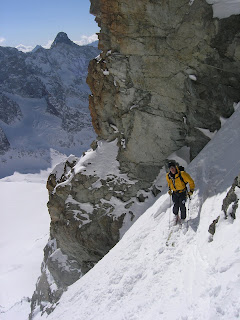
Happy Holidays from the Serial Skier! The Northwest has been blessed worth 4-8 feet of snow in the last week on an old rain crust, a bit of a double edged sword but good skiing to be had. I went up the Cascade powder Cats yurt and saw great coverage, but the hazard was pegged at considerable. That will change but caution was used.
Take the time now to enjoy the travel and use all the tools available to make your assessments. If you feel rusty, be conservative, and consider a Avi refesher course to get your skills back to par. Check out the accidents this fall, more than not, the Road Runner principle(not aware what skills were necessary to be in the backcountry or not aware of the hazard at the time.) came into play more than once.
Snow is in our future. I have heard from Morocco, the Alps, B.C. and our very own Cascades that the skiing is good, so be safe and enjoy the goods!
Ski ya later, Matt





